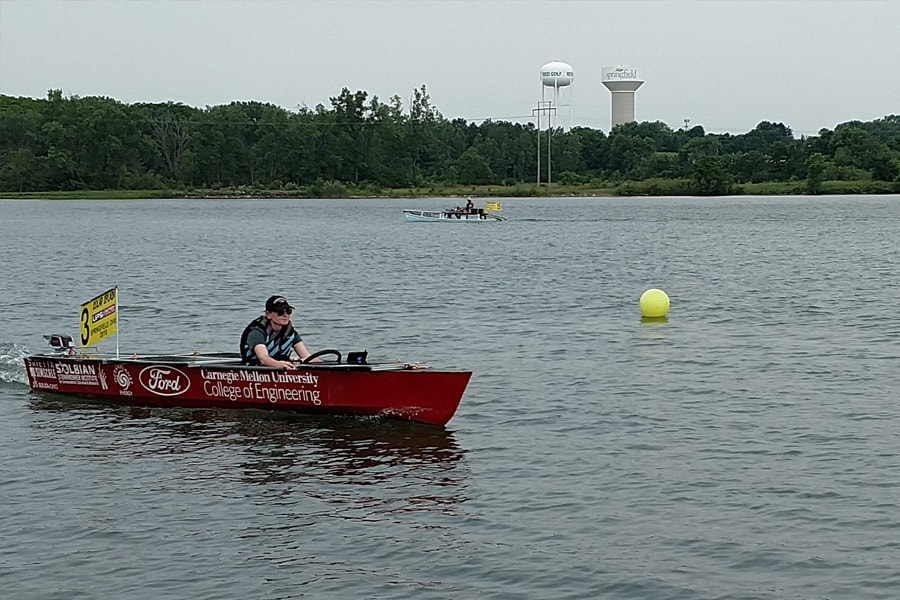
Solar Boat Racing Team Gives Students an Energizing Experience
By Lucas Grasha
Media Inquiries
E. Forney
The Solar Splash competition is split into three main events: sprint, endurance and slalom. Sprint tests how quickly each boat can travel 300 meters. Endurance tests how far the boat can travel in four hours. And slalom tests the boat’s maneuverability by having the captain navigate sharply around buoys.
“You have to charge your batteries while you’re driving,” said team member Nick Lamprinakos, a senior in materials science engineering and biomedical engineering. The event tests how efficiently a boat uses battery power while converting solar energy on the water.”
The team built its current boat, VorteX, over three years from commercial parts and from scratch. Separate groups of team members built the hull, the propulsion power system and optimization system.
“Making the hull out of carbon fiber and epoxy was a huge process,” said Lamprinakos, who noted that the group laid carbon fiber strips into a mold to make the hull.
The propulsion group manages the motor and propeller systems. Originally, the team purchased a commercial system from Torqeedo, but over the last two years they have been building their own outboard motor system. Their goal is to optimize the motor to adjust for multiple events and provide more power to offer a greater top speed.
Team president James Zhang, a senior in mechanical engineering and engineering and public policy, said the team plans to deploy the new motor in 2019.
The power group manages the boat’s electrical system. They balance energy consumption from the boat’s batteries with energy conversion from the boat’s solar array. Recently, the group partnered with OceanPlanet Energy to create a lighter and more efficient solar array for the boat.
The optimization group collects voltage and power consumption data and routes it to the tablet in the cockpit. That allows the pilot and team to assess the boat’s status during races.
Aside from installing a new motor system, the team plans to do more on-the-water testing to prepare for future races. Zhang is excited about taking the boat on the water more.
“The trips will be fun and give the team much more data on the boat than before to work with,” Zhang said.
Carnegie Mellon Solar Racing isn’t all about the adrenaline of racing — the team also enriches the student experience at CMU. The team provides a place for students, in Zhang’s words, “to build crazy ideas they have for the boat,” and is a place for students to apply their engineering and design knowledge to a fun and challenging project. Building and working on the boat tickles any fancy from designing an integrated computer system to building a solar-based engine.
The team’s boat especially catches eyes at CMU’s Activities Fair. By showcasing it at the fair, CMSR hopes to inspire ideas for environmentally conscious construction and attract members throughout the school year. The team also promotes renewable energy awareness and education. Team members take part in events such as Energy Week and Explore Engineering.
To Lamprinakos, the most rewarding part of being with CMSR is the friendly atmosphere at competitions.
“There’s a lot of sportsmanship,” Lamprinakos said. “Since we had a lot of members attend the race last year, we could help out other teams with launching their boats; it was nice to see the reverse this year.”
Zhang said he believes the team offers members the chance to build something unique.
“Few opportunities afford students to work on a project as cool as a solar-powered boat,” Zhang said. “The high level of creative freedom lets students apply knowledge to build a hands-on project from the ground up.
“CMSR gave me my first opportunities to translate strong engineering theory into a realizable project,” he said.